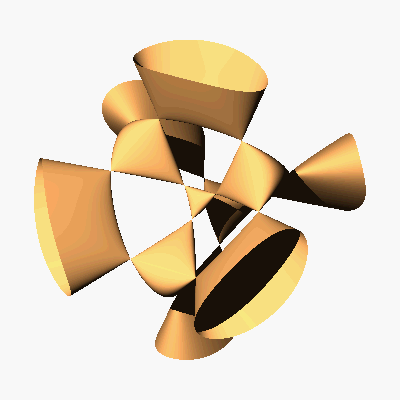

|
In modern algebraic geometry we encounter the notion of derived intersection
of subschemes. This is a sophisticated way to encode what happens when two
subschemes Y_1 and Y_2 of a given scheme X intersect non-transversely. The
classical intersection multiplicity can be extracted from the derived
intersection.
When the ambient scheme X is affine, it is not too hard to describe the
derived intersection, by taking flat DG ring resolutions of the structure
sheaves of the subschemes Y_1 or Y_2. This also works when the scheme X is
quasi-projective. However, derived intersections in more general schemes X
could only be treated using the very difficult homotopical methods of
derived algebraic geometry.
Several months ago I discovered a "cheap" way to construct flat resolutions
of sheaves of rings. The resolutions are by semi-pseudo-free sheaves of DG
rings. The main advantage is that the geometry does not change: all the
action takes place on the original topological space X.
Using semi-pseudo-free resolutions it is possible to produce derived
intersections as above. It is also possible to get a direct presentation of
the cotangent complex of a scheme (at least in characteristic 0). Presumably
the derived adic completion of Shaul, so far studied only in the affine
case, could be globalized using our our methods.
Lastly, the semi-pseudo-free resolutions give rise to a congruence on the
category of sheaves of commutative DG rings on the space X, that we call
relative quasi-homotopy. The functor from the homotopy category to the
derived category turns out to be a faithful right Ore localization. This
fact gives tight control on the derived category. It should be noted that in
this situation there does not seem to exist a Quillen model structure, so
the traditional approaches would fail.
In the talk I will explain the various ideas listed above. More details can
be found in the eprint arxiv:1608.04265.
|